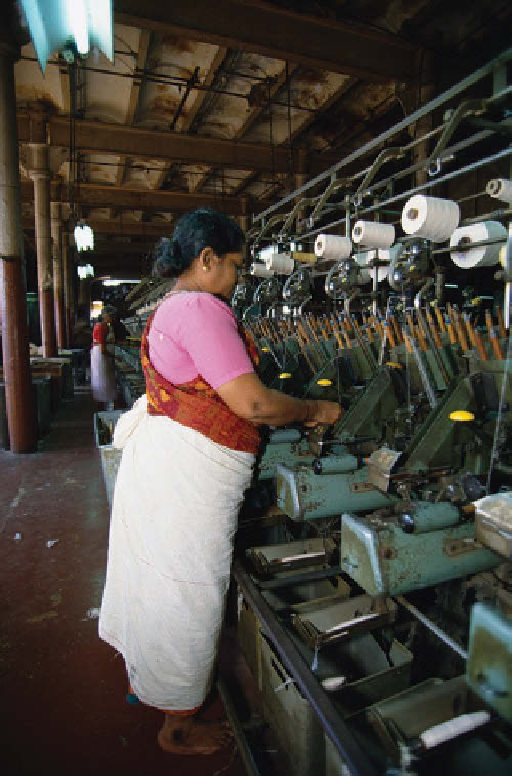Geography Reference
In-Depth Information
seen). Using the Internet, determine where this product is
manufactured and assess why the product is manufactured
there. Hypothesize where production of the good may
shift to in the future and how long it might take for pro-
duction costs (and the price of the product) to decrease
su b stantially.
HOW HAVE DEINDUSTRIALIZATION AND
THE RISE OF SERVICE INDUSTRIES ALTERED
GLOBAL ECONOMIC ACTIVITY?
Service industries (tertiary industries) do not gener-
ate an actual, tangible product; instead, they encompass
the range of services that are found in modern societies.
So many different types of activities can be thought of as
“service activities” that, as we saw in Chapter 11, special-
ized aspects of the service economy were given their own
designations:
quaternary industries
for the collection, pro-
cessing, and manipulation of information and capital
(fi nance, administration, insurance, legal services, com-
puter services) and
quinary industries
for activities that
facilitate complex decision making and the advancement
of human capacities (scientifi c research, higher education,
high-level management).
Distinguishing among types of services is useful,
given the extraordinary growth in the size and complexity
of the service sector. In the global economic core, service
industries employ more workers than the primary and
secondary industries combined, yet these service indus-
tries range from small-scale retailing to tourism services
to research on the causes of cancer. Placing all of these
activities in a single category seems unwarranted.
Specifi city in terminology is also useful in high-
lighting different phases in the development of the ser-
vice sector. In the early decades of the twentieth century,
the domestic and quasi-domestic tertiary industries
were experiencing rapid growth in the industrialized
world. With the approach of World War II, the quater-
nary sector began expanding rapidly, and this expansion
continued after the war. During the last three decades,
both the quaternary and quinary sectors have experi-
enced very rapid growth, giving greater meaning to the
term
postindustrial
.
The expanding service sector in the core economies
is only one aspect of the changing global economy.
Accompanying, and in some cases driving, this expansion
are several other developments that have already been
mentioned: the increasing mechanization of production,
particularly in manufacturing enterprises operating in the
core; the growth of large multinational corporations; and
the dispersal of the production process.
Figure 12.15
Mumbai, India.
The cotton industry has been a major part of
Mumbai's economy since the fi rst cotton mill in India was built
in 1854 in the city.
© Viviane Moos/Corbis.
Geographers who study industrial production recognize
that the nature and meaning of location and place have
changed greatly in recent times, but they also note that
these changes do not create a geographically undifferenti-
ated world. Hence, what is needed is a greater understand-
ing of how places have changed as a result of new produc-
tion methods, new corporate structures, and new patterns
of industry, as well as an examination of how the interplay
between global processes and local places is creating oppor-
tunities and constraints for different parts of the planet.
Think about a cutting-edge, high-technology product that
is still quite expensive to purchase and not yet broadly
used (perhaps something you have read about but not even















































